Underwhelming. That’s what I thought after our first visit to the Disney/MGM Studios in August of 1989.

Years later, I learned that that was the original intention of Disney’s planners: To make the Disney/MGM Studios a half-day experience.
With that half-day mandate in hand, planners came up with just enough attractions to fill out a few hours.
Then, halfway into designing their half-day park – about the same time when plans for Universal Studios were announced – Disney switched gears and decided to make the Disney/MGM Studios a full-day experience.
The problem was, an opening date had been announced. So, the decision was made to open the park with its limited attractions, and add new attractions during the first few years.
IN THE MIDDLE OF MOVIE AND TV PRODUCTION
The impetus for creating the Disney/MGM Studios was to make guests feel as if they were in the middle of movie and television production.
There were sound stages, where filming might be taking place during your tour. There were backlot areas, where guests could get a behind-the-scenes look at special effects and other movie-making magic.
And you could peak over the shoulder of an animator working on the latest Disney classic.

After we walked through the turnstiles, we found that the planners for the Disney/MGM Studios returned to a tried-and-true, hub-and-spoke design formula.
There was a Town Square-type area, looking up the park’s main street, with a replica of the iconic Chinese Theater beckoning up ahead. In the center of the area was an information kiosk, called The Crossroads of the World.
RENT A STROLLER OR WHEELCHAIR AT A FAUX GAS STATION
There also was a faux gas station that served as a stroller/wheelchair rental station and a souvenir shop brimming with nostalgic items called Sid Cahuenga’s One-Of-A-Kind.
That main street in the Disney/MGM Studios – appropriately named Hollywood Boulevard – was intended to look like everyone’s vision of La La Land, although it was a version that never really existed.
There were plenty of stylized storefronts and shops available to peruse during our stroll up the thoroughfare. The street was lined with tall palm trees.
It had the feel of an area that was plucked from the 1930s, complete with period billboards on the rooftops.

About halfway up Hollywood Boulevard, to the right, was the temporary Theater of the Stars, with an amphitheater look and portable benches. The makeshift theater butted up against large wooden barricades.
Those barricades would eventually be torn down to reveal Sunset Boulevard, where The Twilight Zone Tower of Terror, Rock ‘n Roller Coaster and the Beauty and the Beast stage show would take up residence.
But at that point in time, the area was – like many other sections of the park – a boarded-up construction zone.
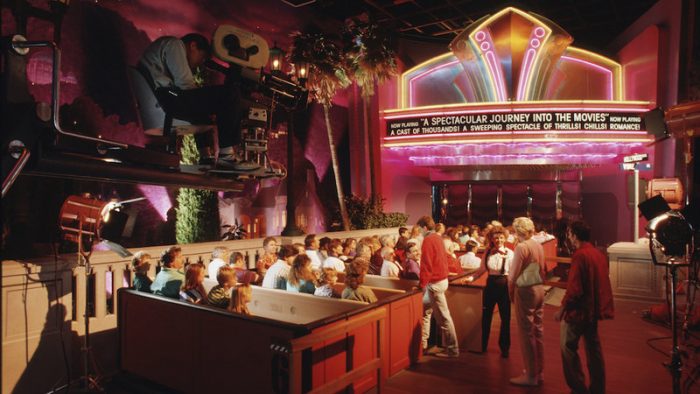
Originally, The Great Movie Ride was an entertainment-themed attraction planned for Epcot.
“After we opened Epcot, we reviewed the project and realized we had left out one important aspect of American industry: Entertainment,” explained Marty Sklar, then the creative leader of Walt Disney Imagineering.
So a new Epcot pavilion focusing on movies, television and radio was proposed, then scrapped … only to be have it become the cornerstone of a new park.
The Great Movie Ride was the personification of Disney/MGM Studios’ mission: A wonderous trip through the history of the movies.
MANY OF TINSELTOWN’S GREATEST MOMENTS
You boarded a large ride vehicle with several rows of seats [similar to, but smaller than the vehicles used in Epcot’s Universe of Energy]. You were joined by a guide, who was eager to take you back in time to some of Tinseltown’s greatest moments.
As soon as your vehicle passed under a large, brightly lighted marque, there were a series of meticulously recreated scenes [featuring an assortment of life-size Audio-Animatronics figures] from some of Hollywood’s most beloved movies:
First, there were a group of showgirls from Busby Berkeley’s Footlight Parade, then Gene Kelly swinging from a lamppost from Singin’ in the Rain, Bert and Mary from Mary Poppins, John Wayne atop his trusty horse somewhere in the wild west, Clint Eastwood outside a saloon and prototypical bad guy James Cagney lurking in the shadows of a 1930s city slum.
There were even two alternating live-action scenes [one a bank robbery from the 1800s, the other a gangster shootout] to further enhance the experience. In both cases, our guide was replaced by either a cowboy or a gangster … only to reappear later in the ride to demonstrate “movie magic.”
Other movies celebrated along the way included Alien, Raiders of the Lost Ark, Tarzan and Casablanca.
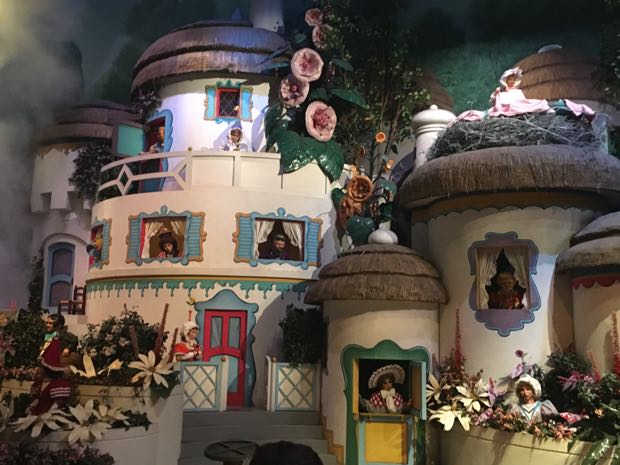
We were truly taken aback by the elaborate details.
It started when you saw that a house had just fallen on the Witch of the East [her curled-up toes were clearly visible].
Then there were the Munchkins greeting us by singing, “We welcome you to Munchkinland … Fa la la la la la la la la la …”
WICKED WITCH OF THE WEST MAKES HER ENTRANCE
Suddenly, a large cloud of smoke revealed the menacing figure of the Wicked Witch of the West, an Audio-Animatronics tour-de-force.

Finally, the witch threatened: “I’ll get you, my pretty! And your little dog, too!”
After which, the witch disappeared in another puff of smoke.
We left Munchkinland to the strains of “We’re off to see the wizard, the wonderful Wizard of Oz” and came upon Dorothy, Toto, the Cowardly Lion, Tin Man and Scarecrow on the Yellow Brick Road as they looked longingly to the Emerald City in the distance.
After a quick nod to Disney’s Fantasia, we pulled into a large screening room where the spectacular finale of The Great Movie Ride – a montage of some of the most memorable movie clips of all time – played out.

We joined a large crowd of guests near the attraction’s entrance, where a “casting director” was in the midst of selecting just the right people to step into scenes from classic TV shows.
The premise of SuperStar Television was to show a typical TV broadcast day, from early morning to late night.
That day started with the “Today” show from the 1950s, in glorious black and white, where a guest was asked to read the morning news.
A FULL DAY OF BROADCAST TELEVISION
The broadcast ran through classic children’s TV shows, the famous candy factory scene from “I Love Lucy,” then to afternoon soap operas, prime time shows such as “Bonanza,” “The Golden Girls” and “Gilligan’s Island,” a sports segment hosted by Howard Cosell, and finally, a late-night “Tonight” show interview by Johnny Carson.
Using blue-screen technology, the previously selected park guests were inserted into each segment, making it appear as if they were in the same scene as, say, the Cartwrights from “Bonanza” or Blanche and friends in “The Golden Girls.”
When I left the 1,000-seat theater after the show, I was elated. SuperStar Television was fast-paced, funny and extremely entertaining.
It brought back a flood of memories. Most everyone I saw leaving the theater had big smiles on their faces.
Next up was the Monster Sound Show, which we found to be far-less enjoyable.
Yes, it was clever to get guests to agree to take part in adding sound effects to a horror film. The result, however, was a mish-mash of mistimed sounds, shrieks and squeals that didn’t quite live up to the hype.

The show, held in a huge covered arena, was a tutorial on how stunts were set up and performed during recreated scenes from Raiders of the Lost Ark.
Actors playing Indy and Marion joined several would-be stunt men and women chosen from the audience to take part in a variety of seemingly harrowing scenes, culminating with an explosive finale.
The next few hours, we took part in the Backlot and Special Effects tours.
The Backlot Tour was a leisurely a tram ride, which began with glimpses into the costuming department. We then saw a collection of residential houses – actually, they were just facades – of famous TV sets, including the exterior shot from “The Golden Girls.”
There also were a collection of cars and vehicles that were used some memorable movies.
You could even see Walt Disney’s own Gulfstream airplane on display during the tour.

I have to admit, the first time we saw all that water cascading from above toward our ride vehicle, it was quite harrowing.
During the Special Effects tour, we walked leisurely through a series of exhibits where we learned about blue-screen technology [the giant bee used in Honey, I Shrunk the Kids, as well as some brave young volunteers, were the stars of that sequence].
We also learned how they created a make-believe oceanic storm in a rather small water tank [again, with a brave youngster at the helm of a faux boat].
We even saw a Disney Channel set. Although there were people milling about, we were told filming had wrapped up for the day.
We next visited the Animation Building, where we were able to look over the shoulders of Disney artists at their drawing boards, albeit behind glass partitions.
On display in the building were drawings, sketches and animation cels, as well as 15 Oscar statues won by Walt Disney Animation.
There also was a short film which explained how an animated feature is developed. Of course, these still were the days of hand-drawn animation … computer-generated imagery [CGI] had yet to become the norm.

We ended our visit with a walk along New York Street, which we had seen from our tram during the Backlot Tour.
Having been born and raised in New York City, I was taken aback at how realistic the street looked. It was elaborately detailed, right down to the hilarious signage.
And the city skyscrapers in the distance were imposing, thanks to the art of forced perspective.
Much like the two parks that came before it, the Disney/MGM Studios were lacking in thrill rides when it first opened.
The opening of the Twilight Zone Tower of Terror [1994] and Rock ‘n Roller Coaster [1999] would change that dramatically.
And more recently, the additions of the Slinky Dog Dash coaster in Toy Story Lane, Rise of the Resistance in the land devoted to Star Wars and Mickey & Minnie’s Runaway Railway have made the renamed Hollywood Studios WDW’s must-do destination … the kind of place you could spend all day exploring.
FIRST IMPRESSIONS OF THE DISNEY/MGM STUDIOS IN 1989:
Hearing the cast member during The Great Movie Ride say to one the guests “are you from Jersey?” Hey, how did he know we were from Jersey?
As much as I loved The Great Movie Ride, I thought the SuperStar Television show was equally spectacular. Having everyday guests taking part in a simulated broadcast was genius; those guests’ performances during each show’s “taping” were priceless.
During our first visit to the park, my wife was chosen to be “interviewed” by Johnny Carson on “The Tonight Show,” while our son “talked” to legendary sportscaster Howard Cosell.
The rest of us ended up doing a quick on-screen cameo when the camera panned into the audience; we were identified as The Royal Family.
I loved the soundtrack piped out into the park … vintage big band sounds from the 1930s, which tied in perfectly with the look and feel of Hollywood Boulevard.
Echo Lake, the only body of water in the park, was home to Dinosaur Gertie’s Ice Cream of Extinction.
The placement of a dinosaur in a park themed to movies and TV seemed a bit odd, until I learned that Gertie was the star of an early 1900s animated short, which historians [and Walt Disney as well] credited with helping advance the development of live-action animation.
Third in a series. Next time: THE FIRST TIME I VISITED: Disney’s Animal Kingdom
Chuck Schmidt is an award-winning journalist who has covered all things Disney since 1984 in both print and on-line. He has authored or co-authored seven books on Disney, including his most recent, “The Beat Goes On,” for Theme Park Press. He has written a twice-monthly blog for AllEars.Net, called Still Goofy About Disney, since 2015.







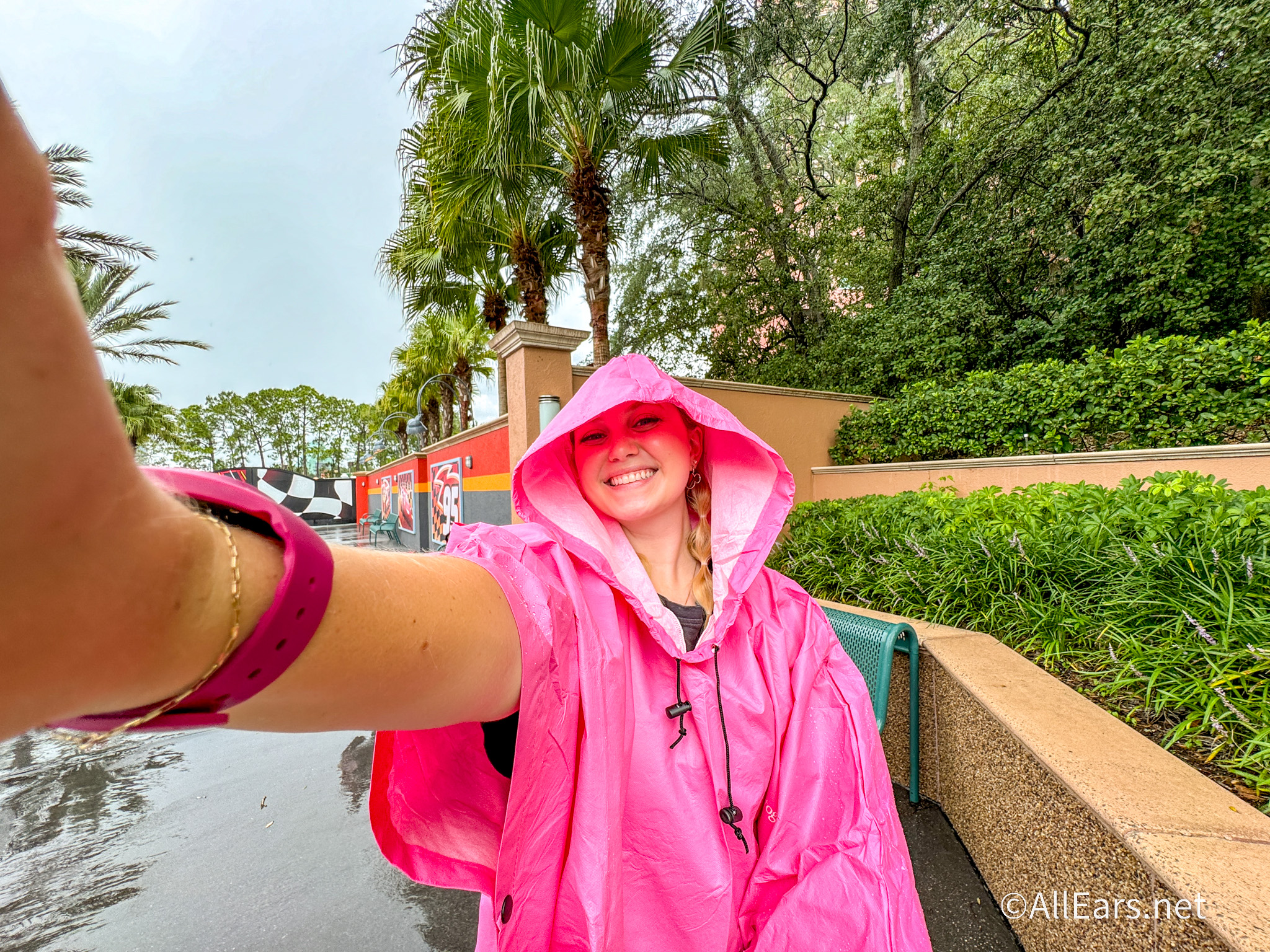




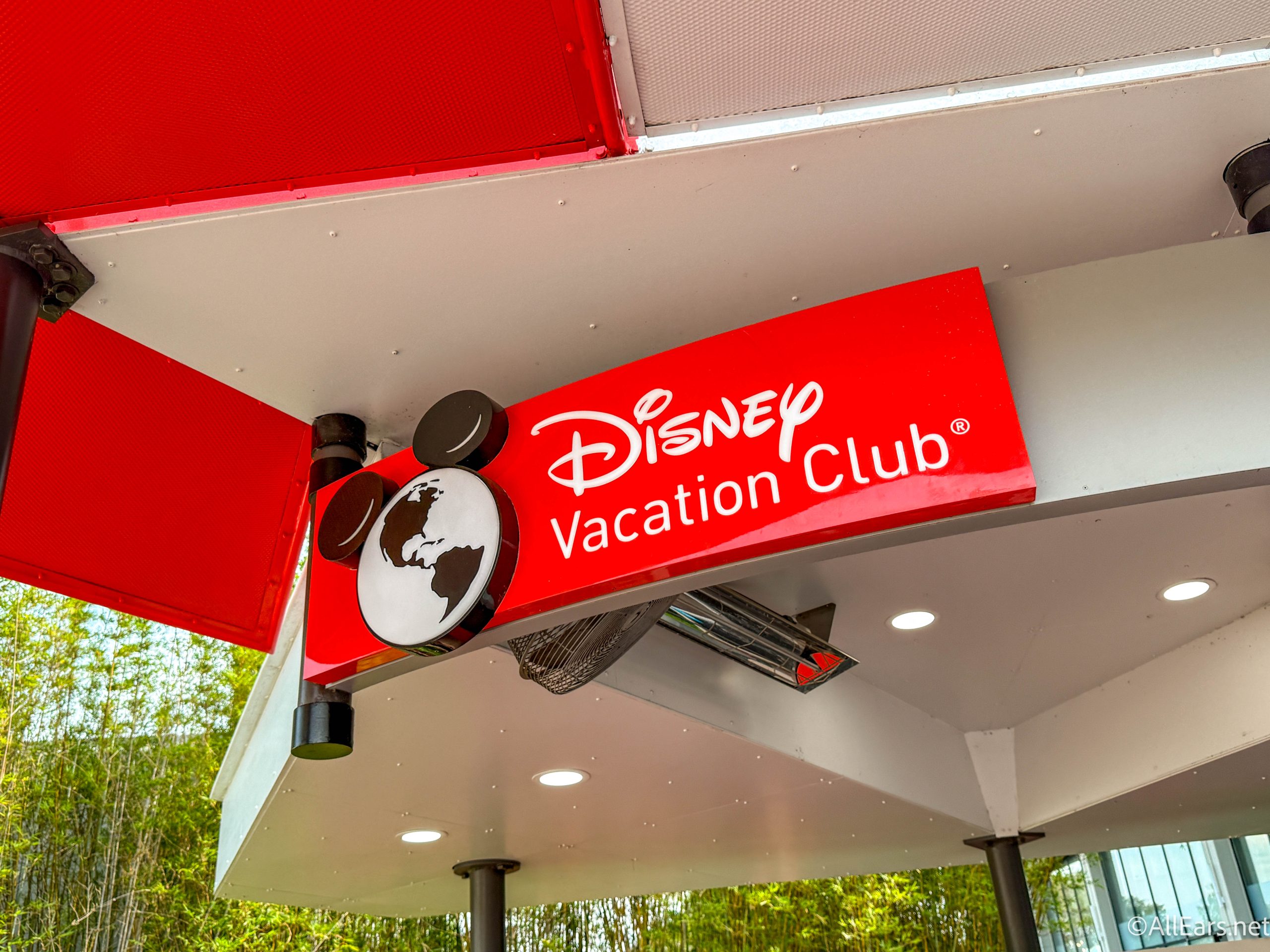




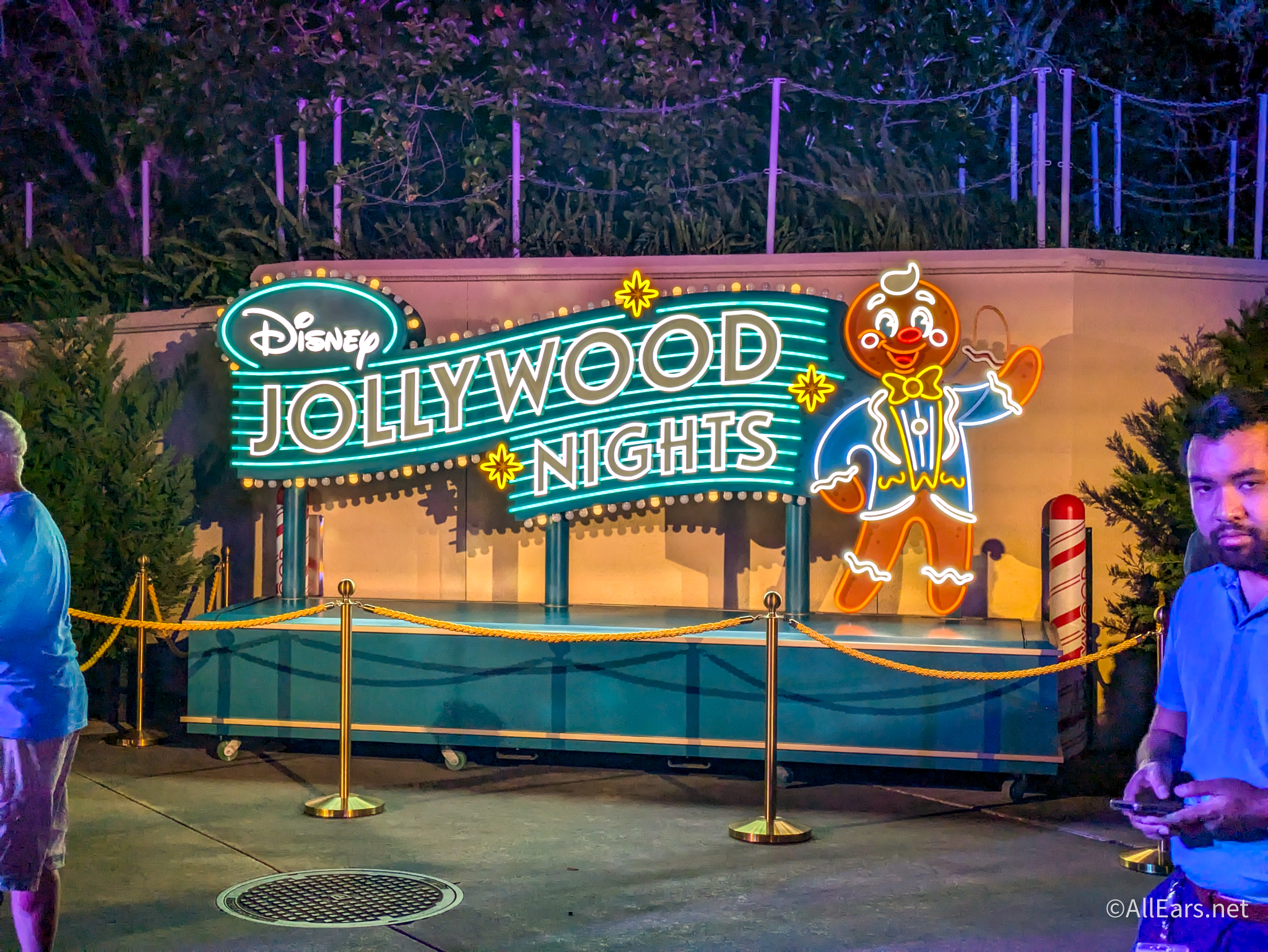

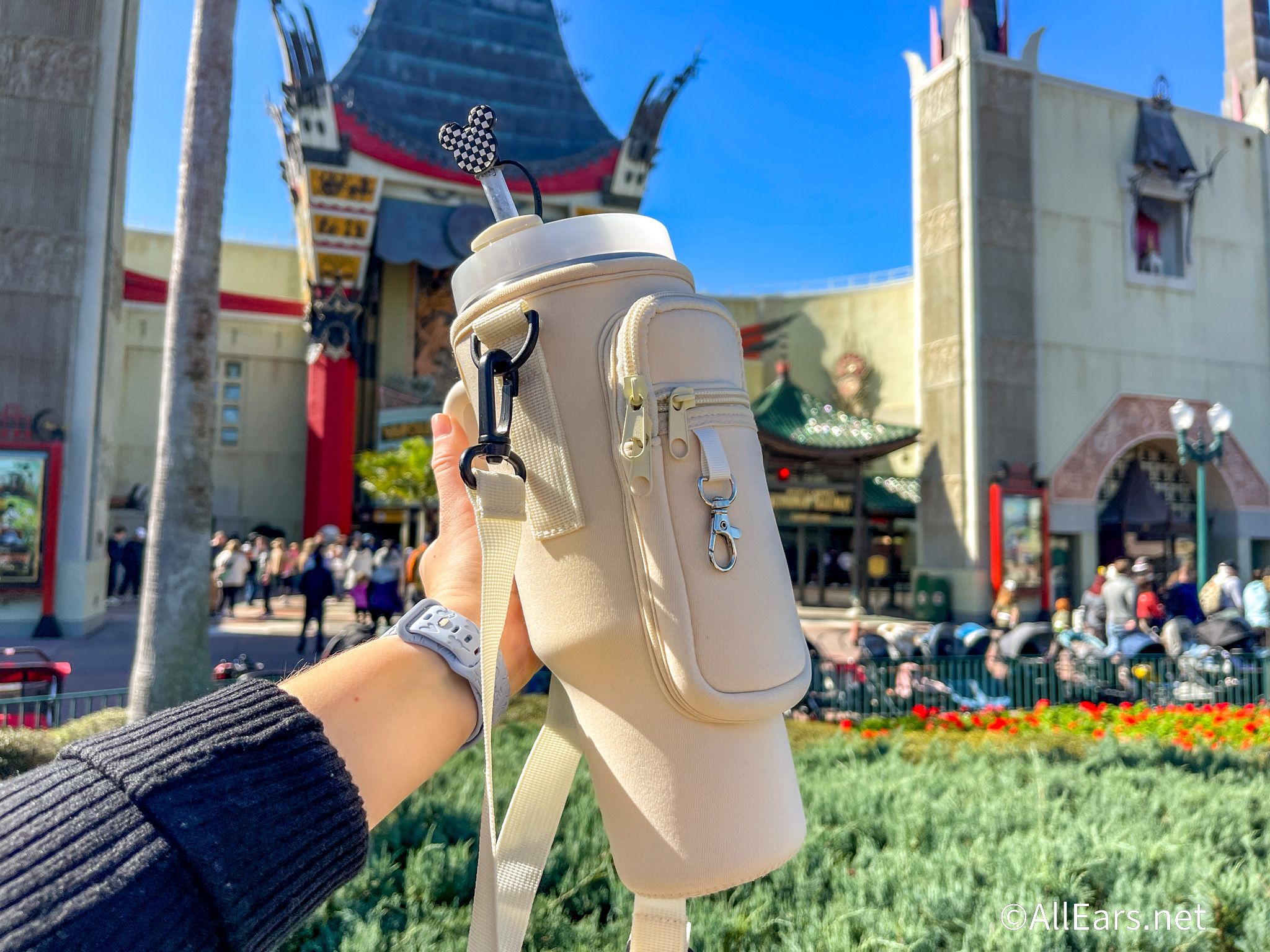

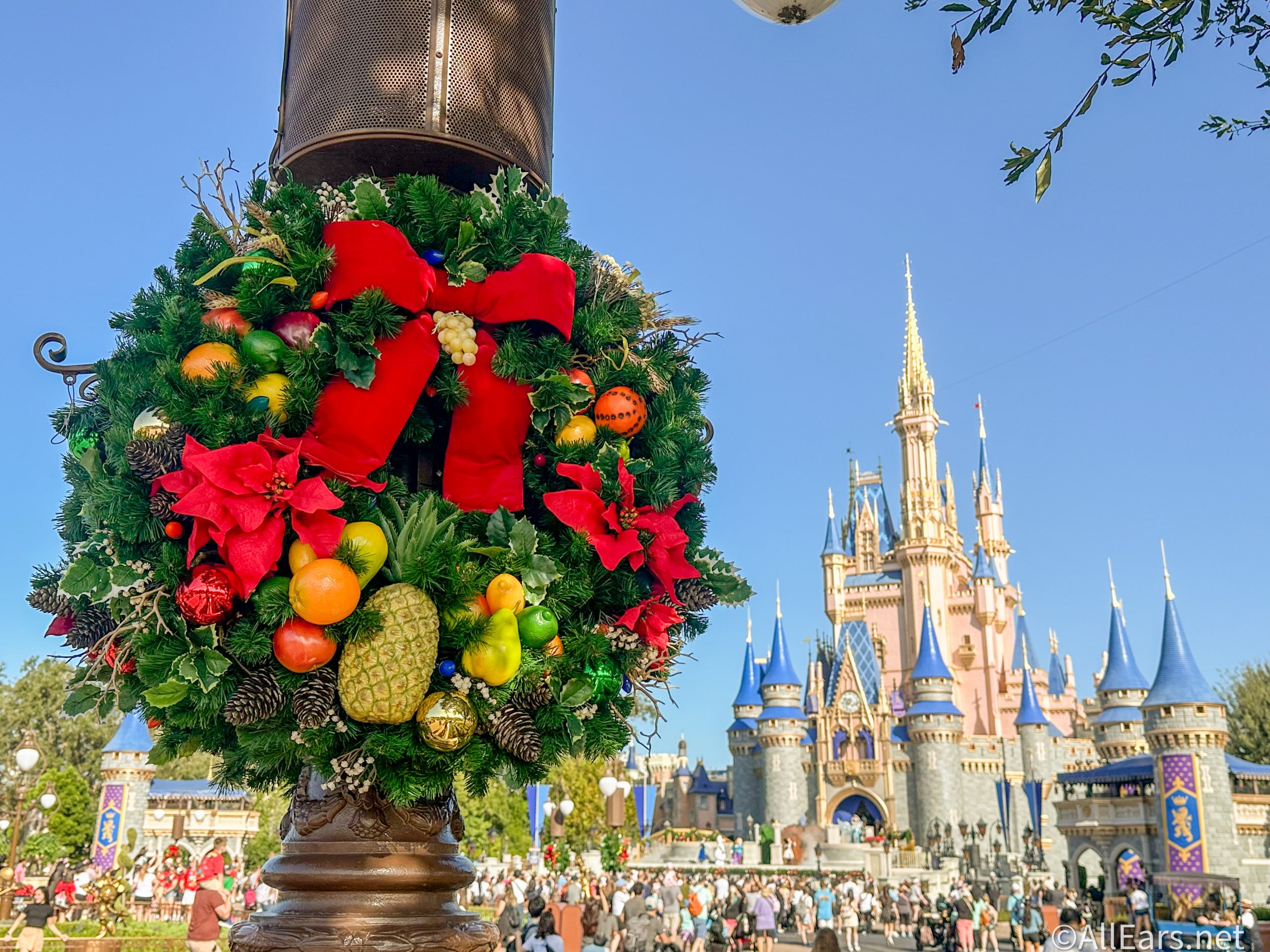

Trending Now
EPCOT's latest ride reopening could prove chaotic for land hopping.
Amazon has Loungeflys on sale as part of Prime Day!
We're sharing our absolute favorite Disney finds that are on sale right now!
"it's a small world" is changing in Magic Kingdom AND Disneyland!
The resort's refurbishment lineup continues to grow.
Don't let the good deals slip away! We rounded up some of the BEST Prime...
The official dates have just been announced for the Festival of the Holidays at EPCOT!
We've spotted DOZENS of Disney Loungefly backpacks, bags, and purses on sale during Amazon's Prime...
Disney filed NEW permits for work in Magic Kingdom and Animal Kingdom -- here's what...
Fans are BEGGING Disney to bring back this classic ride, but the wait isn't likely...
Disney Vacation Club members can celebrate starting next month with BIG perks!
This Disney World rule could definitely use some tweaks.
Going to Disney World alone isn't as scary as you'd think...
If you are flying home from Disney World with these souvenirs, be extra kind to...
Have you seen Disney Visa's newest Disneyland 70th card design?
Disney just dropped some bad news about ticket prices for Jollywood Nights this year...
Let’s be real: Disney World is basically a maze of vibes, snacks, and tiny details...
Here are the park bag mistakes you might make when going to Disney World and...
Disney announced new runDisney Springtime Surprise Weekend themes, and we're obsessed!
We are sharing our best tips for planning the best Christmas trip to Disney World!